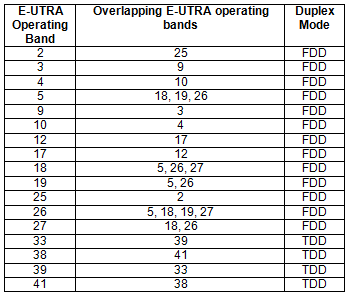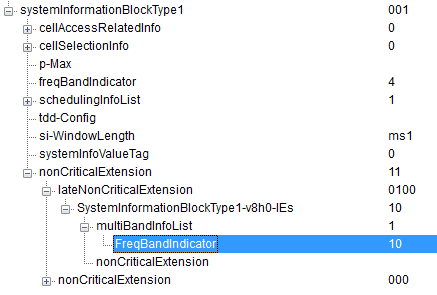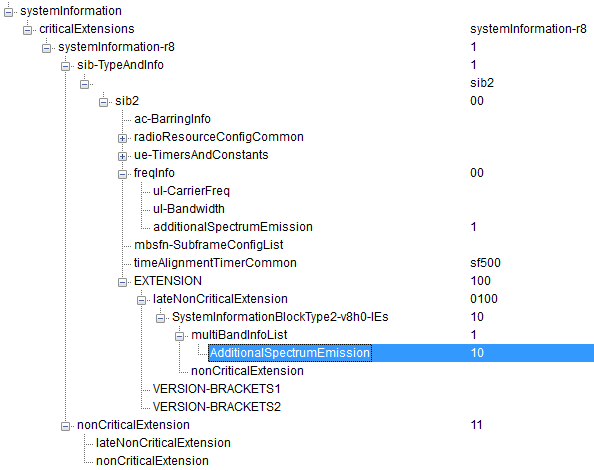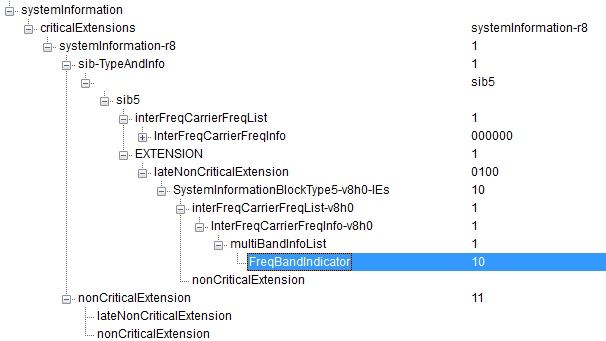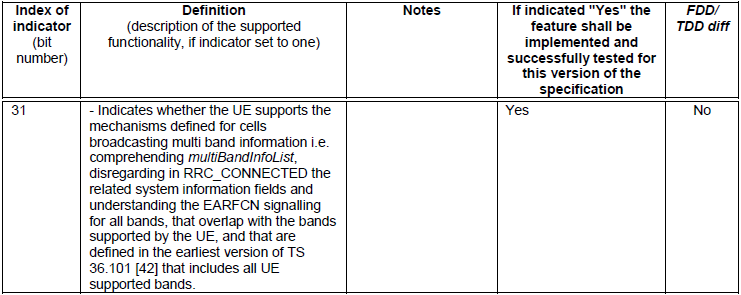|
4G/LTE - MFBI |
||
|
MFBI (Multi Frequency Band Indicator)
As we have experienced in previous technology, at the initial stage of technology band/frequency allocation is done in such a way that there is no overlapping frequency between any two different bands. But as time goes on and demand for new band increases, we start seeing some inevitable situation where some of bands overlapping.
As a result of this general trend, now we have following overlapping cases and it is highly likely that this table would get extended as time goes on.
< 36.307 V11.9.0 Table A-1: Overlapping bands (multi-band environments) for each E-UTRA band >
How Network inform UE of the Multiband Supportability
Another trend that we have seen in previous technology (e.g, WCDMA) shows that we tend to introduce new Information Elements in various SIBs (in case of WCDMA, we added BandIndicator in SIB5). In LTE, we had freqBandIndicator in SIB1 from day 1, with MFBI we need to have additional information elements. This new/additional information is carried by a couple of different SIBs as follows. In LTE, the additional IE is added to SIB1,2,5 and in WCDMA it is added to SIB19. Here goes one example of SIB1,2,5 showing the new IE (I will add SIB 19 part later)
How UE informs NW of its capability on MFBI ?
Since MFBI should be supported on both UE and NW, both NW and UE should know about the capability of their counter part about this capabilililty. As described above, NW can inform UE of MFBI capability (requirement) on NW side.. then how UE can network knows of its MFBI capability ? As usuall, UE informs NW of this via UE capability information message. More specifically, by the following FGI bit in UE Capability Information message.
<36.331- Table B.1-1: Definitions of feature group indicators >
I put a couple of examples of this setting in UE Capability Information message decoded by Wireshark (3GPP decoder)
featureGroupIndicators: 7fcffeb2 .... ..1. = Indicator 31: Mechanisms defined for cells broadcasting multi band information - Supported
featureGroupIndicators-r9: 7fcffeb2 .... .0.. = Indicator 30: Handover between FDD and TDD - Not supported
What is the meaning of MFBI to a UE and Network ?
How a Network inform UEs of the multiple band support is pretty straightforward as explained above. Now you may have more practical question. What is the motivation of this trick ? Why we need this trick ? What is the meaning of MFBI to a UE and Network ?
If you are interested in more business side motivation, read the reference [1].
If you want to figure out the practical means out of technical perspective, let's read a couple of lines in the specification.
36.331 - 5.2.2.7 describes as follows.
- if the frequency band indicated in the freqBandIndicator is part of the frequency bands supported by the UE and it is not a downlink only band; or - if the UE supports multiBandInfoList, and if one or more of the frequency bands indicated in the multiBandInfoList are part of the frequency bands supported by the UE and they are not downlink only bands: Rewriting this in a very simple way, we can say 'a UE can select only those cells, the frequencyband of which is listed in freqBandIndicator or multiBandInfoList even though there are other cells within the same frequency range'.
OK.. I think I understand this, but still not so clear to me what is the implication of this in business point of view (or subscriber's point of view. Take a look at following imaginary cases and hopefully it would give you some practical insight.
< Case 1 >
Let's suppose we have two operators and two UEs configured as follows.
Operator A : freqBandIndicator = 4, multiBandInfoList = Omit in SIB1 Operator B : freqBandIndicator = 10, multiBandInfoList = Omit in SIB1
UE A : Support Band 4 only UE B : Support Band 10 only
In this case, even though the two cells are in the same frequency (at least overlapping frequency) and in terms of hardware implementation both UE A and B are capable of selecting to (camping on to) operator A and operator B. However, due to SIB1 configuration, UE A can camp on only to Operator A and UE B can camp on only to Operator B.
Now Operator A aquired Operator B (or made a business agreement of sharing their network and allowing the subscribers to any operator. However in this case there is no way to allow UE B to select to operator A or to allow UE A to select to operator B according to the procedure defined in 3GPP spec mentioned above. This issue can be solved in < Case 2 >
< Case 2 >
Let's suppose we have two operators and two UEs configured as follows.
Operator A : freqBandIndicator = 4, multiBandInfoList.freqBandIndicator = 10 in SIB1 Operator B : freqBandIndicator = 10, multiBandInfoList.freqBandIndicator = 4 in SIB1
UE A : Support Band 4 only UE B : Support Band 10 only
In this case, UE A can camp on either to Operator A or Operator B, and UE A can camp on either to Operator A or Operator B unless it is blocked by other higher layer process.
Reference :
[1] AT&T revamp of LTE network will help customers switch to small carriers
|
||
